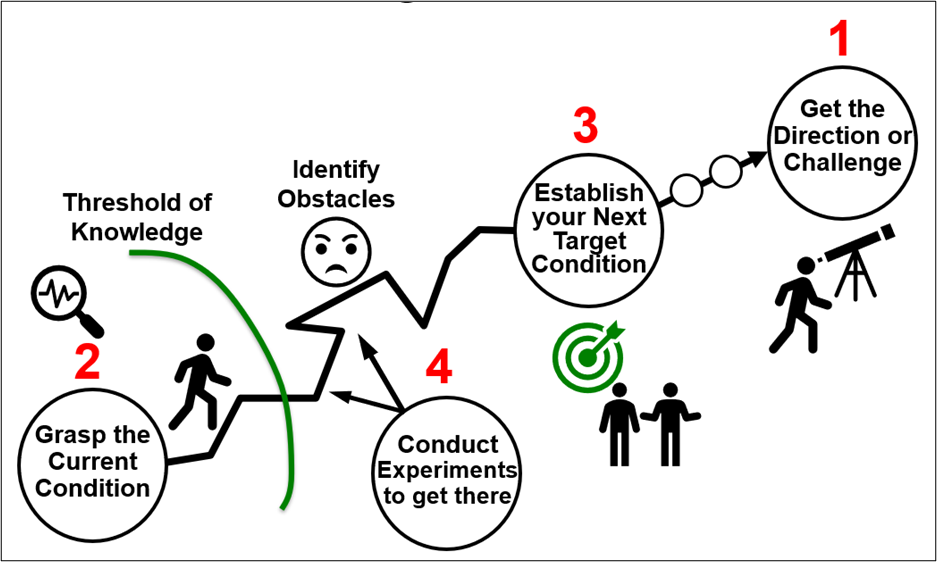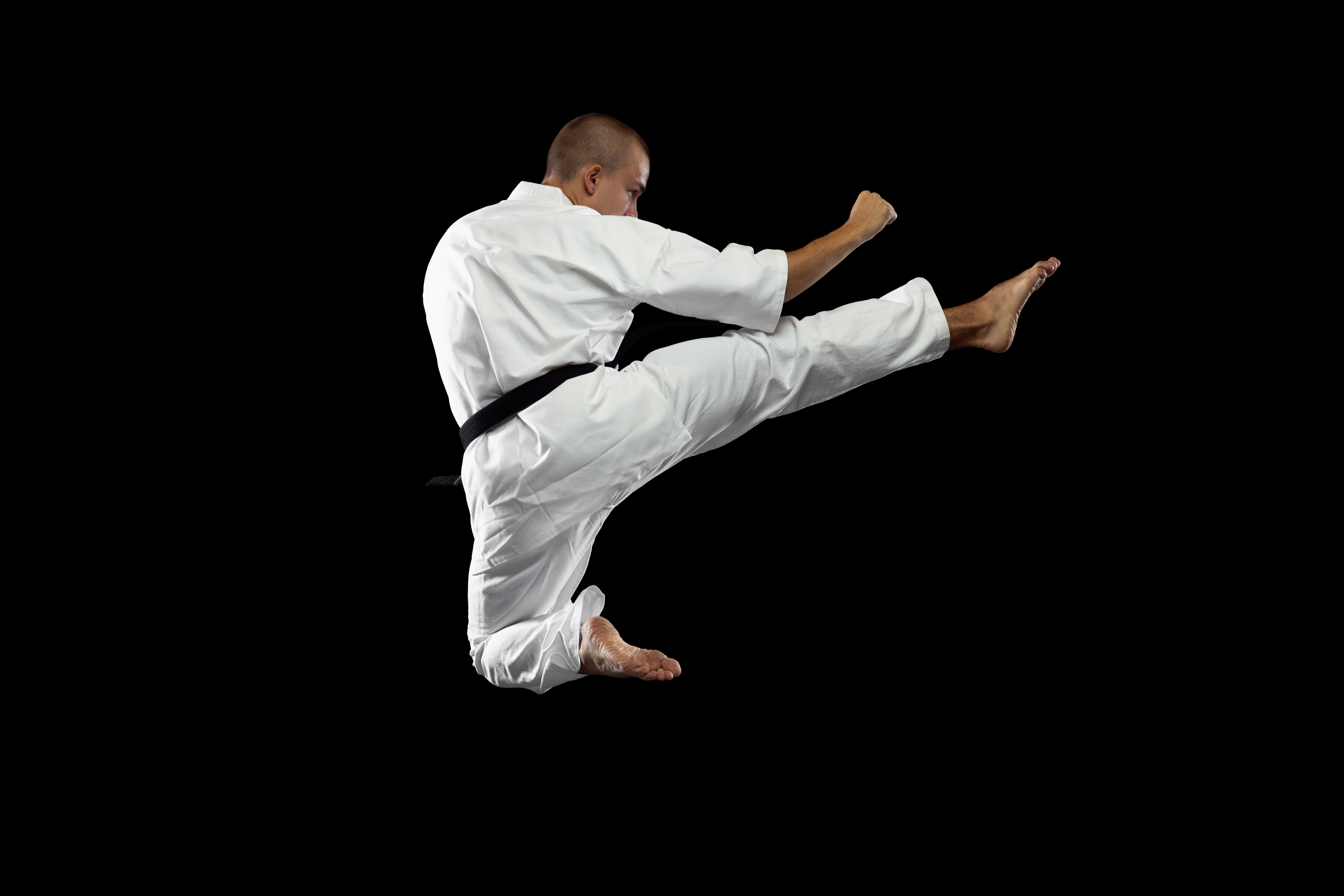Toyota Kata: The Secret Sauce of Lean by Conrad Soltero
Whether your organization is on a lean journey or planning one, aligning management and the workforce with understanding and acceptance can be a challenge. Lean promises shortened lead times, less waste, and more productive operations. But for many companies the results achieved have fallen short. There is growing consensus in the lean community that a narrow focus on lean tools without providing the workforce with continuous improvement skills will result in poor results if not outright failure.
The question for LSS practitioners and company leaders: How to develop basic CI skills in a 21st century workforce? Before embarking on any improvement effort, it is important to establish standards. Training Within Industry is a powerful method to do just that. In last month’s blog I discussed the role of TWI in continuous improvement. TWI is a foundational method to help establish the Current State of a process and to sustain results once a Future State is implemented.
Now back to the question posed above: How to develop a culture of continuous improvement? Here I am not talking about larger-scope, project-based CI efforts. For those situations the DMAIC process can be very effective. What about dealing with smaller, day-to-day issues? The method we recommend: Toyota Kata. This simple yet powerful methodology can yield impressive results, not only in terms of process improvements but also in changing company culture to one of an ‘army of improvers. Some call it the Secret Sauce of Lean.
How does the Toyota Kata work? First, keep in mind the Toyota Kata is not a technique to perform improvement blindly. Just as with the DMAIC process, improvement efforts start with a strategic plan. In addition, specific 9-month to yearly tactical objective(s) must be considered. Ideally there should also be a defined Future State value stream map. Only then can the kata practitioner align their efforts to those of the organization.
Before answering the question above let’s start with the term kata. This Japanese word goes back over 100 years and has its origins in martial arts. The English translation of ‘kata’ is ‘form’. In karate, for example, a kata consists of a series of 20 to 70 movements (e.g., kicks, punches, twists, etc.) which must be done in sequence and with perfect form. A specific kata is practiced over and over, until it becomes automatic. Judges rate individuals in competitions based on how well they perform the kata (see example below).

The term kata is now used more widely in Japan as a ‘way of doing’, with a focus on the form and order of a process.
Back to the Toyota Kata. Just as in karate there are a series of defined steps. And just as with karate, a major goal is for individuals to use the Toyota Kata in a repetitive manner until it becomes second nature and is used almost without thinking.
Here are the four steps in the Toyota Kata:
- Get the Direction or Challenge. Kata practitioners should choose a Target Condition in their area which is in alignment with a company objective.
- Grasp the Current Condition. The Current Condition is determined by going to gemba to observe the process and gather data. Examples of data to collect include the work sequence, takt times & task (cycle) times, output fluctuations, flow types (1-piece or batch), staffing & shifts, equipment downtime, capacity, and any other relevant data. The Target and Current Conditions are depicted on a chart or A3.
- Establish Your Next Target Condition. Next, an Obstacle keeping the process from attaining the Target Condition is chosen and documented. Once an Obstacle has been selected, a Hypothesis for overcoming the Obstacle is developed.
- Conduct Experiments to Get There. An experiment is then decided upon to test the Hypothesis. Before the Experiment is run, however, a Prediction of the results from the Experiment is documented. The Experiment is then performed, and the Output compared to the Prediction.

Toyota Starter Kata Process
The gap between Expectations and Results is what is learned by the practitioner. This is where the “magic” of kata happens. The practitioner begins to better understand both their “Knowledge Threshold” and the process/system. In addition, the kata practitioner begins to appreciate what they do and don’t know.
A new Hypothesis is then formed for overcoming the Obstacle, and the process is repeated. Often there will be a series of Target Conditions (hence the smaller circles in the graphic) as the kata process is repeated. This goes on until a new obstacle appears on the practitioner’s journey to the Target Condition. Not all Target Conditions are achieved. Remember – the true value is the learning the practitioner accomplishes.
What is described above is known as the Starter Kata. That is, every organization should – over time – develop their own customized kata routine. Also, the way the kata is spread throughout the organization is through the coaching of the new practitioner by a teacher -someone who has practiced the kata and understands it.
Toyota Kata relies on applying a novel combination of the scientific method and the power of a practiced routine. Succinct daily practice of this improvement routine has been shown to be the single greatest factor in a successful lean transformation.
Early students of lean who went overseas to learn about the “Japanese manufacturing miracle” witnessed spotless operations scrupulously organized with a plethora of visual cues. What was out of view was the thinking process management used for decision making. Or to put it differently, what was difficult to see was the culture of continuous improvement.
The difficulty of effectively implementing lean was captured brilliantly in a quote from Artushi Niimi, former president of Toyota Motor Manufacturing North America. When asked about his greatest challenge to teach the Toyota Way to American managers he responded: “They want to be managers, not teachers.”
Beyond teaching the scientific method, Toyota Kata is structured to provide learning from unforeseen contingencies by maintaining deployment flexibility while minimizing the psychological impact of failures. Toyota Kata focuses on what is learned through experimentation, not what is achieved through implementation.
When performing a kaizen event, the goal is to achieve a solution with the side benefit of something learned. Toyota Kata turns that around, with a focus on learning about the system, with the possible benefit of incremental improvement.
Finally, I’d like to connect kata with my blog from last month about TWI. Both kata and TWI require application of PDCA, a qualitative scientific method. You will always encounter obstacles in your lean journey. If your obstacle is people centered and they don’t know or can’t do, use TWI Job Instruction. If the person doesn’t care or won’t do, use TWI Job Relations. If your obstacle is operational, use the Toyota Kata. Anything else that remains as an obstacle is technological and that is far easier to handle than the first two types.


